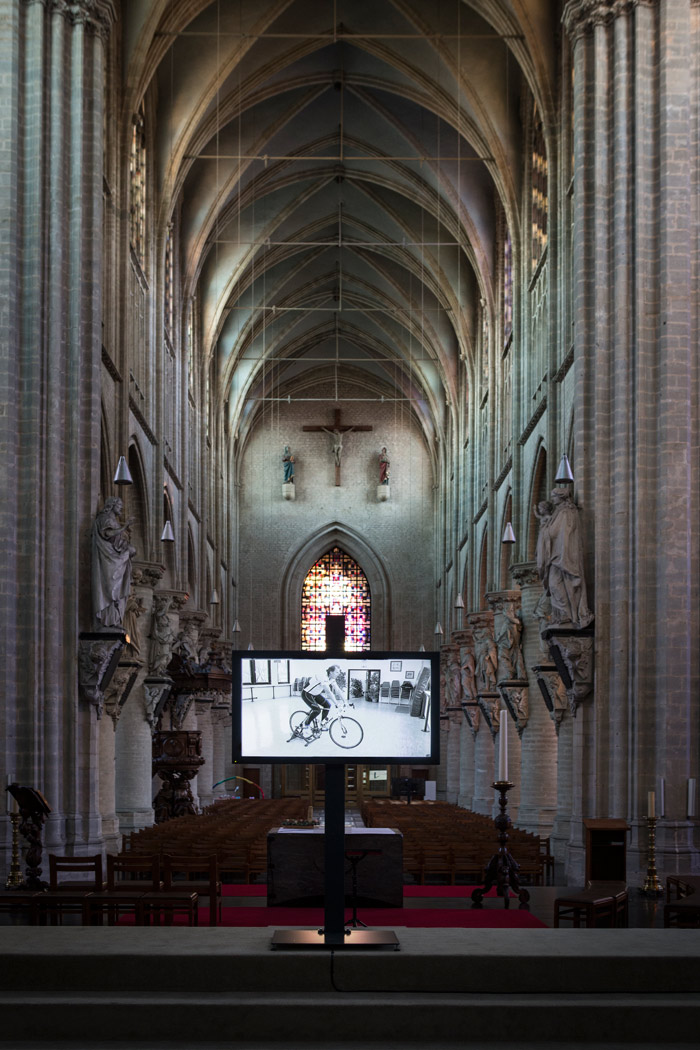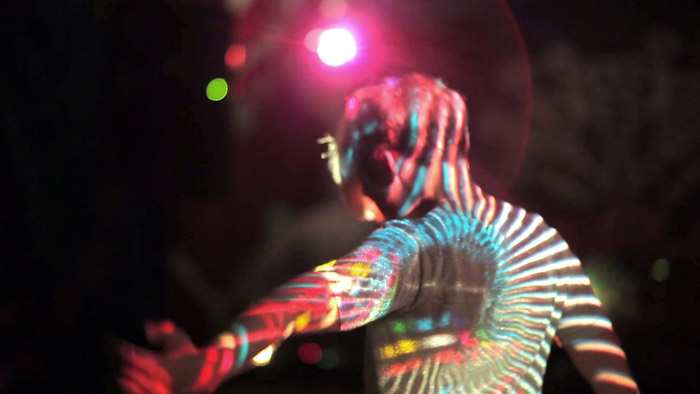Mechelen is a small city in Belgium, poised exactly half way between Brussels and Antwerp. Though it has a higher percentage of listed buildings than the better-known tourist magnet Bruges, for a long time, the city has been a hidden gem. Over the last couple of years, however, Mechelen has managed to put itself on the international art map with a series of ambitious exhibitions and projects. One of these is Contour, the Biennial of Moving Image, which just saw its 6th edition come to an end.
Leasure, Discipline, and Punishment is the title of this year’s edition curated by Jacob Fabricius. As the biennial developed a strong tradition by showcasing video art in various historical venues throughout the city, Fabricius configured his exhibition in four public (or semi-public) buildings, each with a distinct set of rules and regulations influencing human behavior. Apart from the brand new city museum Hof van Busleiden exhibition hall, there is also the prison, the KV Mechelen football stadium, and a church. The three keywords in the exhibition’s title are not only tackled in the respective venues corresponding to the theme, as one might imagine, but throughout the entire exhibition. This curatorial approach was probably adopted in order not to follow the title too literary, but it sometimes also resulted in a certain loss of coherence.
The video How to Live in the FRG by Harun Farocki welcomes the visitor in the hallway of Hof Van Busleiden, the main venue. The movie is a compilation of training sessions ranging from military exercises, instructions on how to cross a street, to striptease lessons. Produced just before the fall of the Berlin Wall, it gives an absurd insight from the East German point of view of overregulated events in the West steering the (free?) behavior of individuals. Inside, the big exhibition space is filled with a construction of scaffolding, a clever move to make this space suitable for showcasing plenty of video art—though Fabricius also wisely integrated sculptures, like a wacky doll by Jos de Gruyter & Harald Thys, and installations for variety’s sake. The exhibition design refers to prison cells, which is of course no coincidence. On one of the walls, you can see posters of various movies set in prisons (Caged, Femmes en prison, etc.), hanging next to a video in which Liz Magic Laser created choreography with dancer Lisbeth Gruwez. The work is set in Mechelen’s prison and based on the movements of the characters in these films.
Another highlight was the video and sound piece The Twelfth Man by Paul Hendrikse. The artist observed football fans in the local football stadium and made an inventory of their slogans, cheers and sounds. The music score, which is also exhibited here, is brought alive in an isolated recording studio. Other works are less convincing however, and have little, or nothing to do with the theme, like the stop animation by Peter Wächtler, Pernille which is with Madsen’s video Dissolve in which she tries to blur our sense of representation. The work of Gustaaf De Bruyne (1954- 1977) is somehow too obvious of an attempt to include a local, forgotten artist that is hence rediscovered—a rather trendy device in the art world these days.

Josef Dabernig, Excursus On Fitness, installation view 2010. Video, black & white. Contour 2013. The 6th Biennial of Moving Image. Photo Credit: Kristof Vrancken.
As a whole, the church of Our Lady across the Dyle is a missed opportunity. Though churches have so many rules and regulations and are hence an ideal inspiration point for the theme, most of the pieces presented here are rather tame and not striving to engage with this loaded venue at all. One of the few exceptions is Pablo Pijnappel’s sound installation Lucas, which has been set in a confession chair
The prison was, for understandable reasons, not accessible during our visit, while the football stadium only displayed a handful of works (Josef Dabernig, Pernille, and Madsen.) Hence the locations functioned more as a theoretical backbone or source of inspiration, possibly leading to new commissions, rather than as exhibition venues. That is a pity however, as Fabricius wants to investigate the restraints and possibilities of these venues on the social fabric. By not using them to the fullest, he partly fails in this mission.
Though there are many interesting works to see at this biennial (Sonia Boyce, Sarah Vanhee, Alejandro Cesarco, etc.) and it has an interesting curatorial angle, it does not really manage to keep the fascination constant. Even the work of David Shrigley, who made a list of rules for each venue, lacks a bit of his characteristic strength—and that says something.
By Sam Steverlynck
























